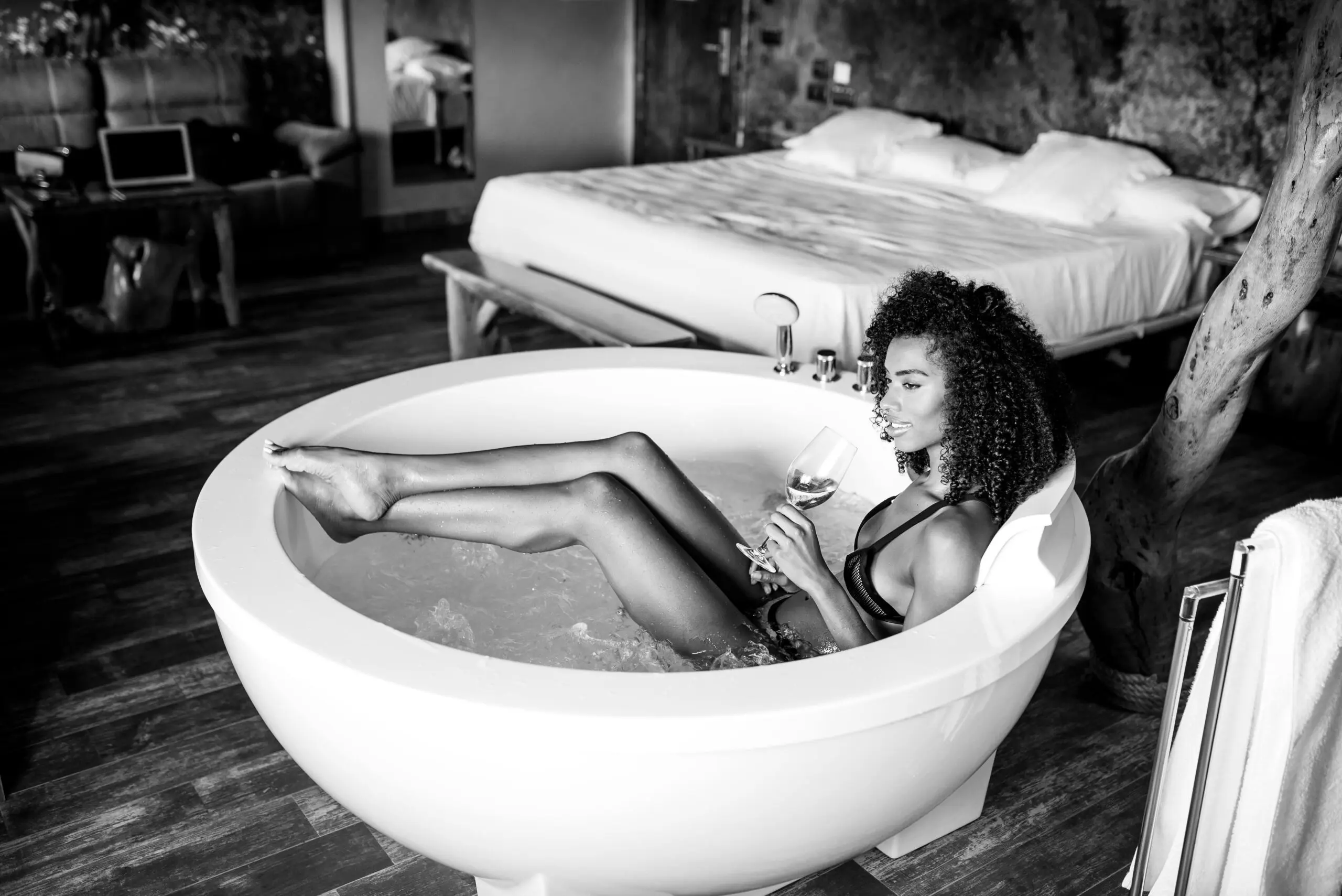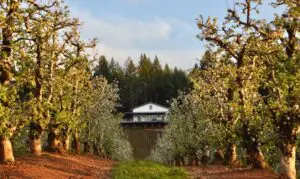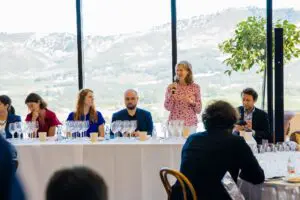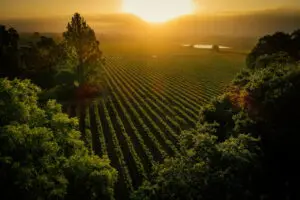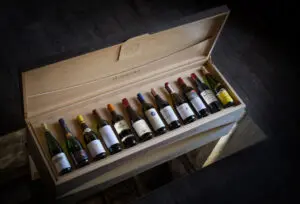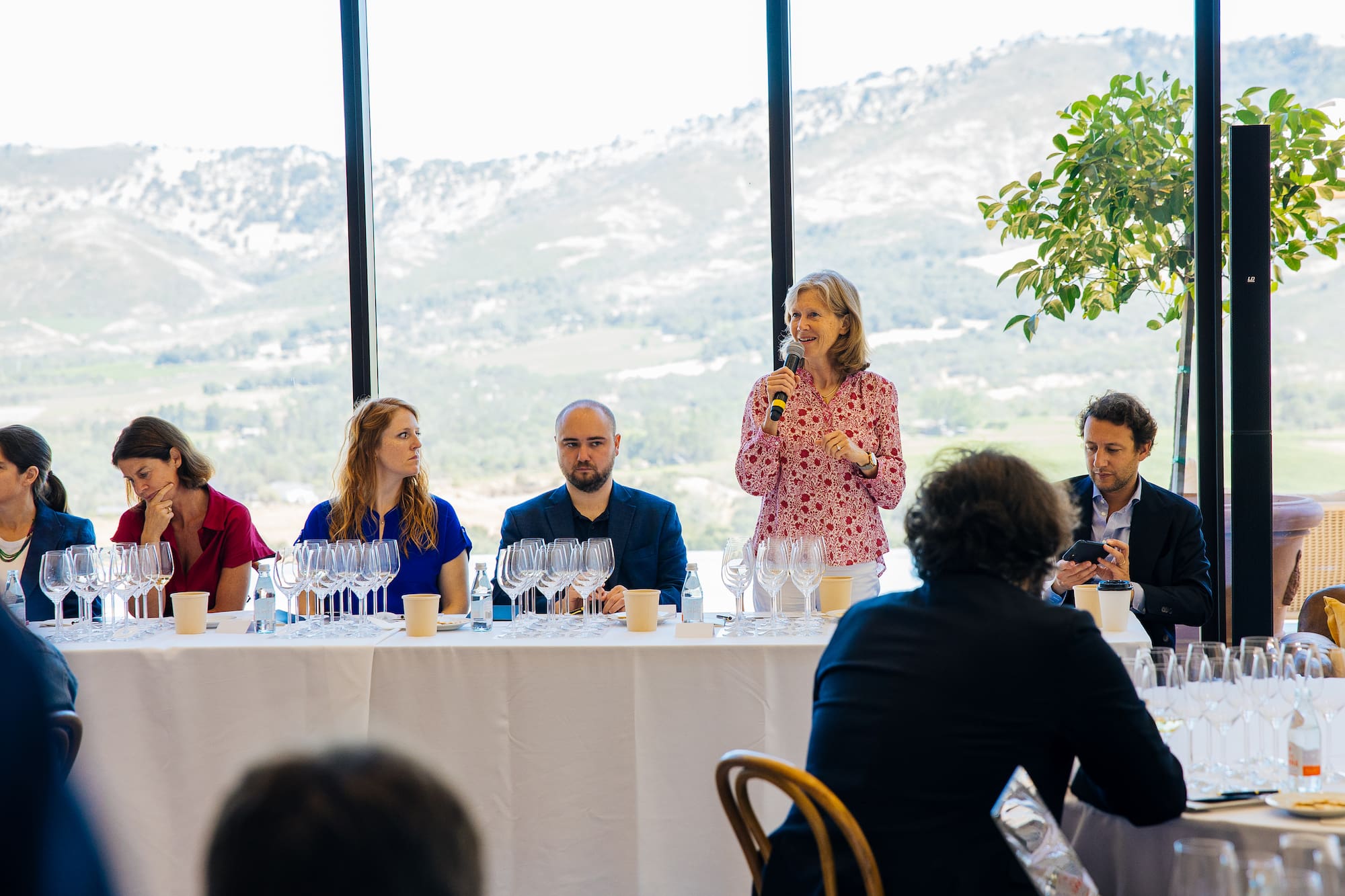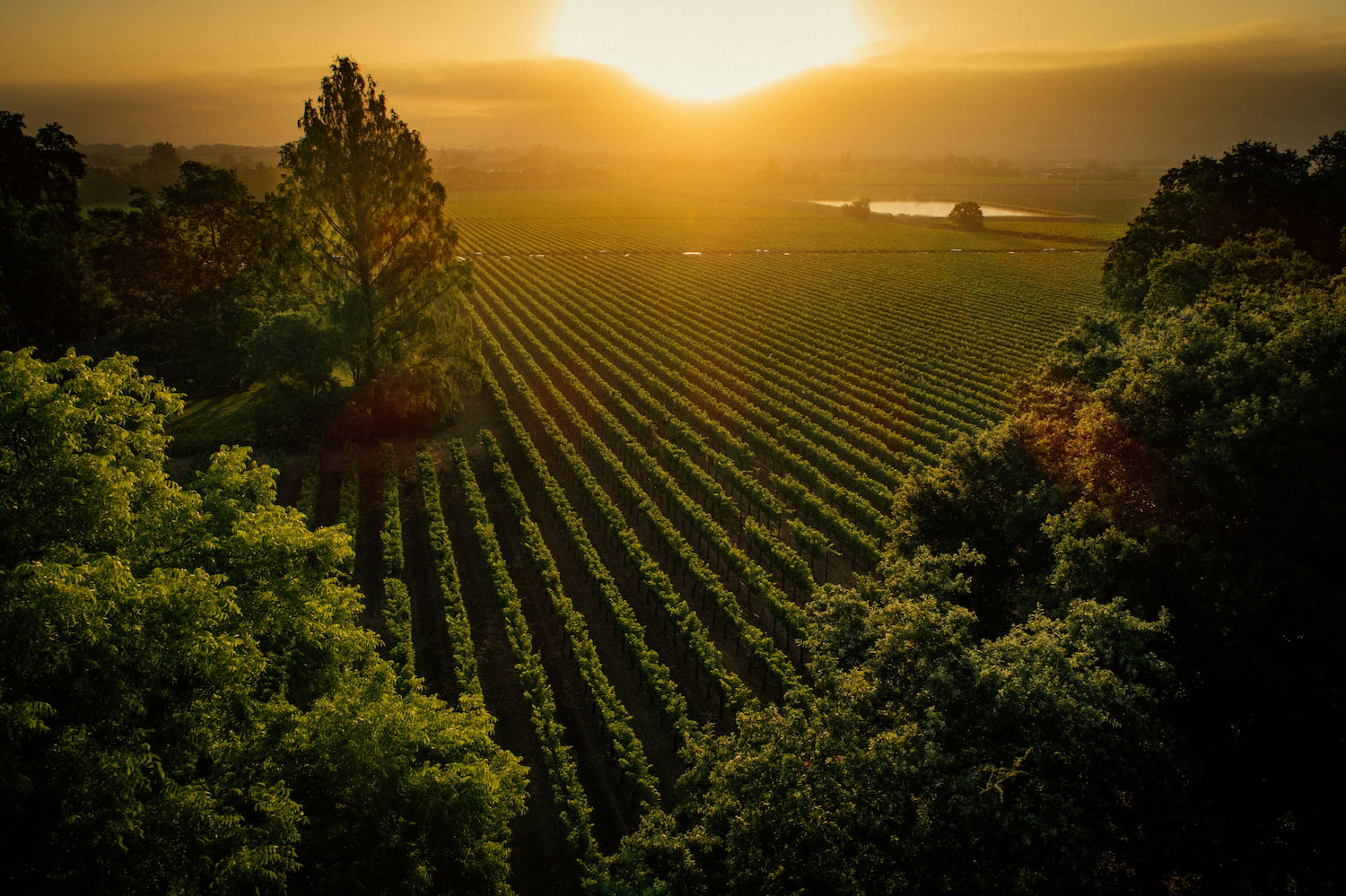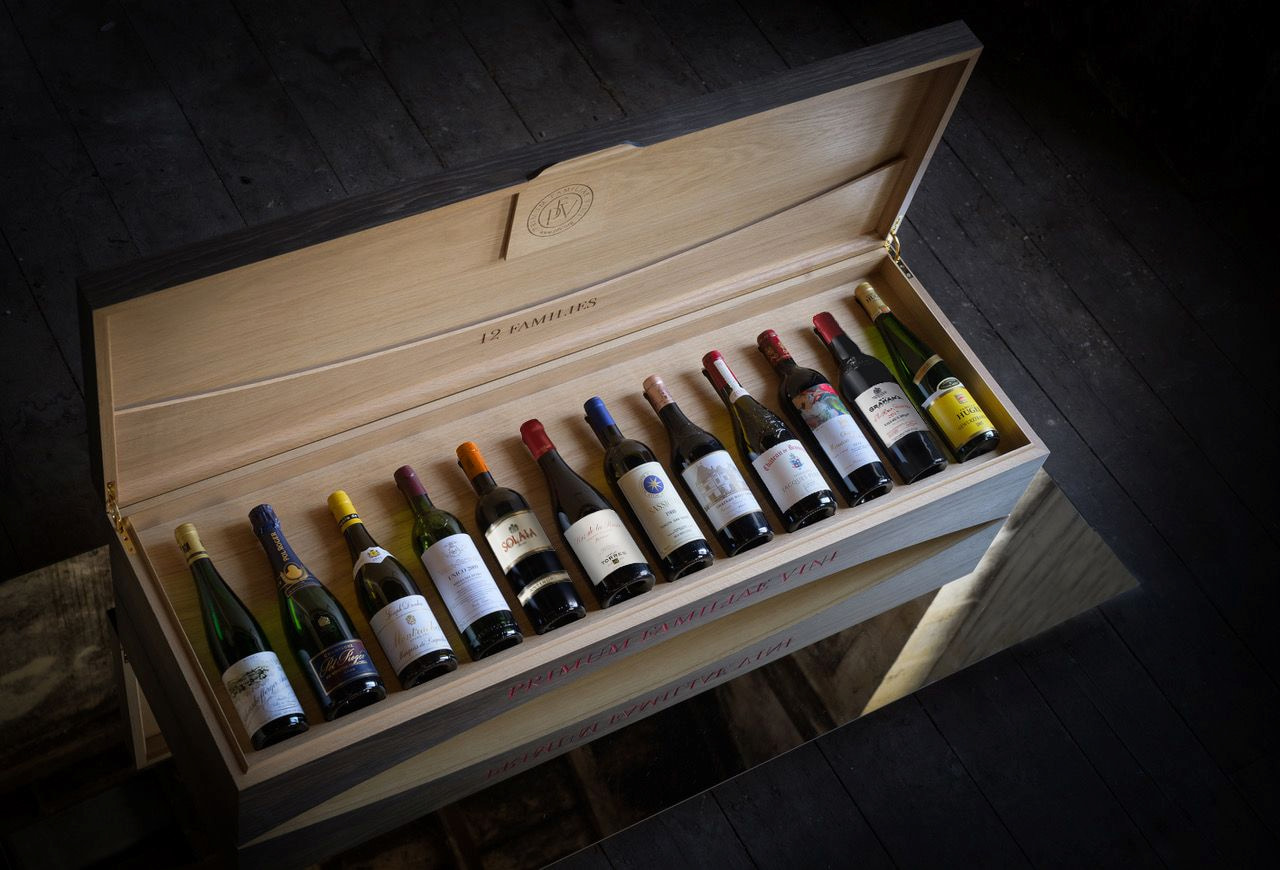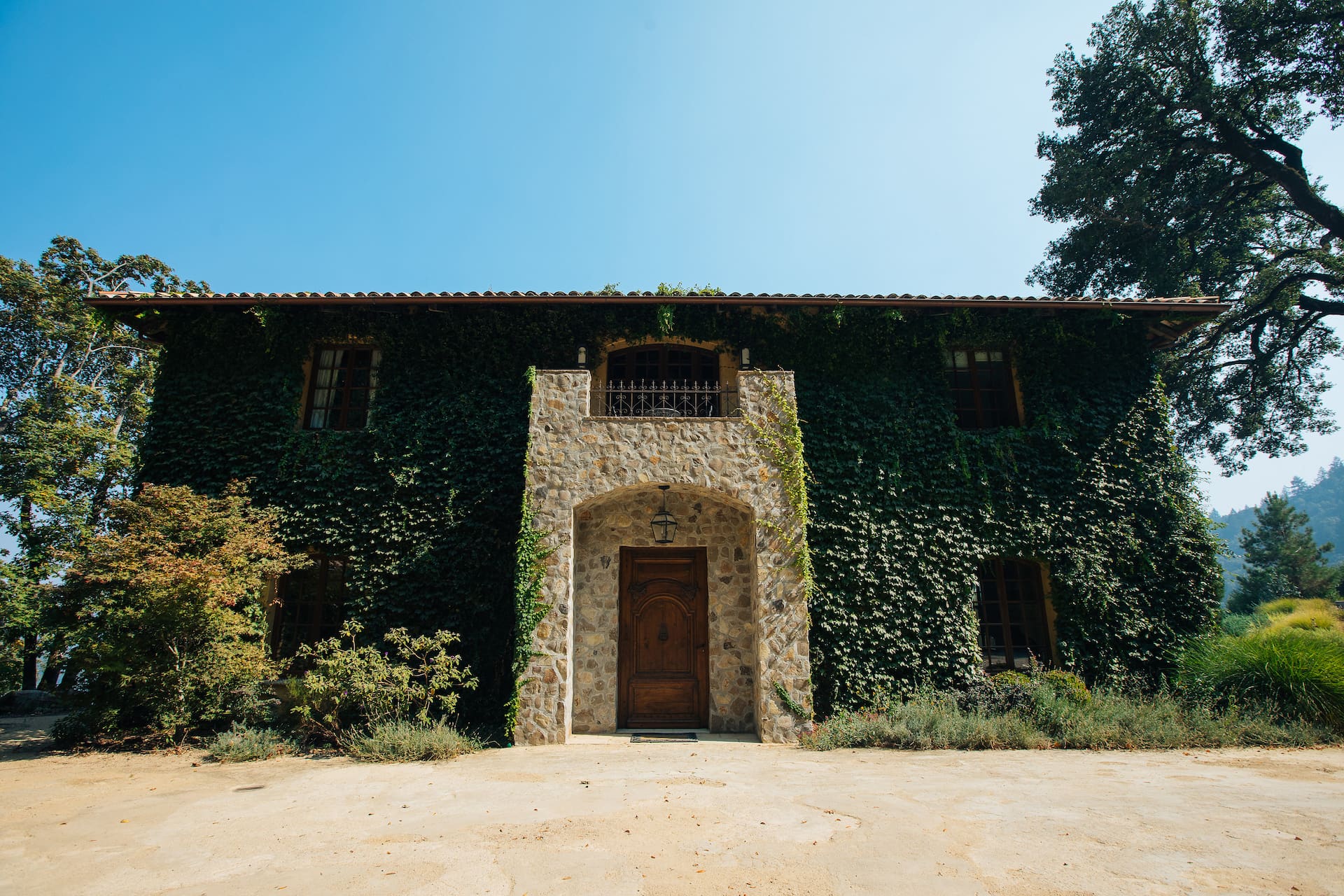Lucy Spain and Kevin Chesley are two of our Writers-In-Residency, raising their glasses from London and Los Angeles, respectively. Her certifications from the American Sommelier Association and WSET Level 3 Award make her uniquely qualified to dazzle us with her wisdom. Kevin’s screenwriting for CBS and MTV make him fun enough to have along for the ride. With wine being the most romantic drink for a couple, we at Monarch decided this would be our first article shared by two. Kevin and Lucy are not an item (don’t make it weird), but they ARE both in love with wine and the experiences it brings.

There’s no sense in denying that wine is the sexiest pour in the world. Every aspect of the ritual of savoring wine is meant to be shared intimately. A bottle is ready to party wherever you are, tasting just as delicious up in the penthouse suite as it does down on a moonlit beach – places cocktails don’t dare to tread.
Beer, more closely associated with platonic gatherings, certainly doesn’t hold a candle. No, from the pop of a champagne cork to the mesmerizing bliss of a seductive swirl, wine is the drink of choice for any couple looking to make the night magic.
What other drink can an excited new couple share on a date, even before the first kiss? Flavors they’ll experience together from different glasses… but not before uniting for that sharp, sexy little clink. Sure, it lowers the inhibitions too, but the allure is far deeper than that. Wine is just downright sensual.
A Seduction As Old As Time
The passions aroused by wine are as old as wine itself. The Golden Age of Ancient Greece is ripe with wine festivals held in an annual circuit to honor Dionysus – the God of Wine and Ecstasy. The Romans based their Bacchanalias on the same intoxicating group customs.
Here, we’re leaning in on the romantic bliss it brings for two – far from the crowd and just as time-honored. As far back as 701AD, Li Bai’s poem puts it perfectly, “Such is the rapture of wine, that the sober shall never inherit.” Centuries later, Pablo Neruda used wine as a metaphor to woo the one he most desired, “My love, suddenly, your hip is the curve of the wineglass filled to the brim…”
Later in the same century, that poetry seemed to take a dip. By the 1950s, wine had become a somewhat dusty topic – written about more by scholars than lovers. For any subject, the language we use is defined by our time. The way we speak of wine follows suit. Take, for example, this quote by John Keats, one of the most renowned figures of Romanticism:
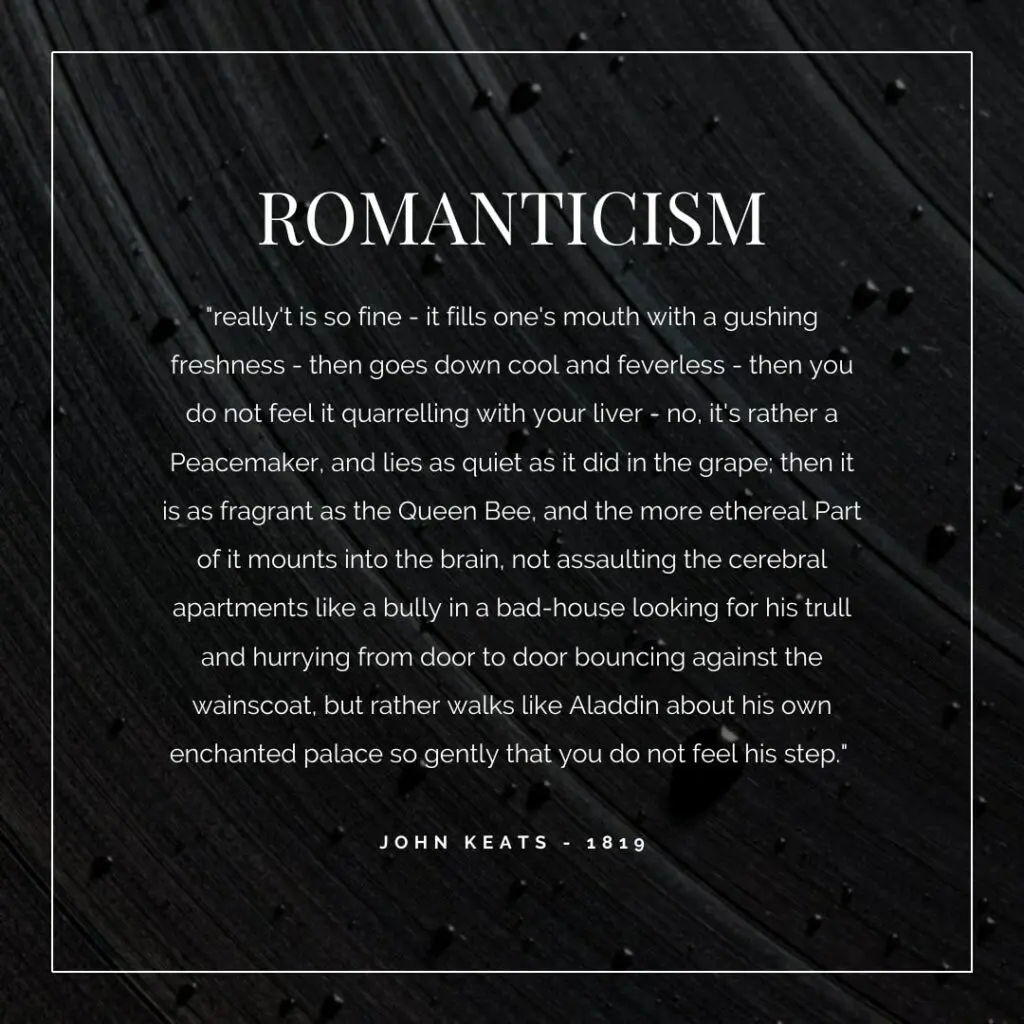
Just feel how much Keats’ style is loaded with sensuality and imagery, this Claret (Bordeaux style blend) takes on a mystique and character all its own. A character that he experiences throughout his entire body. He’s comparing this wine to someone he wants to be with alone again and again… and implies the reader will want to as well.
By the middle of the next century, we began to enter the realm of descriptors and wine writing lost some of its poetic touch. Compare the above Keats quote with the kind of wine review you’d commonly read from a journalist like A.J. Liebling:
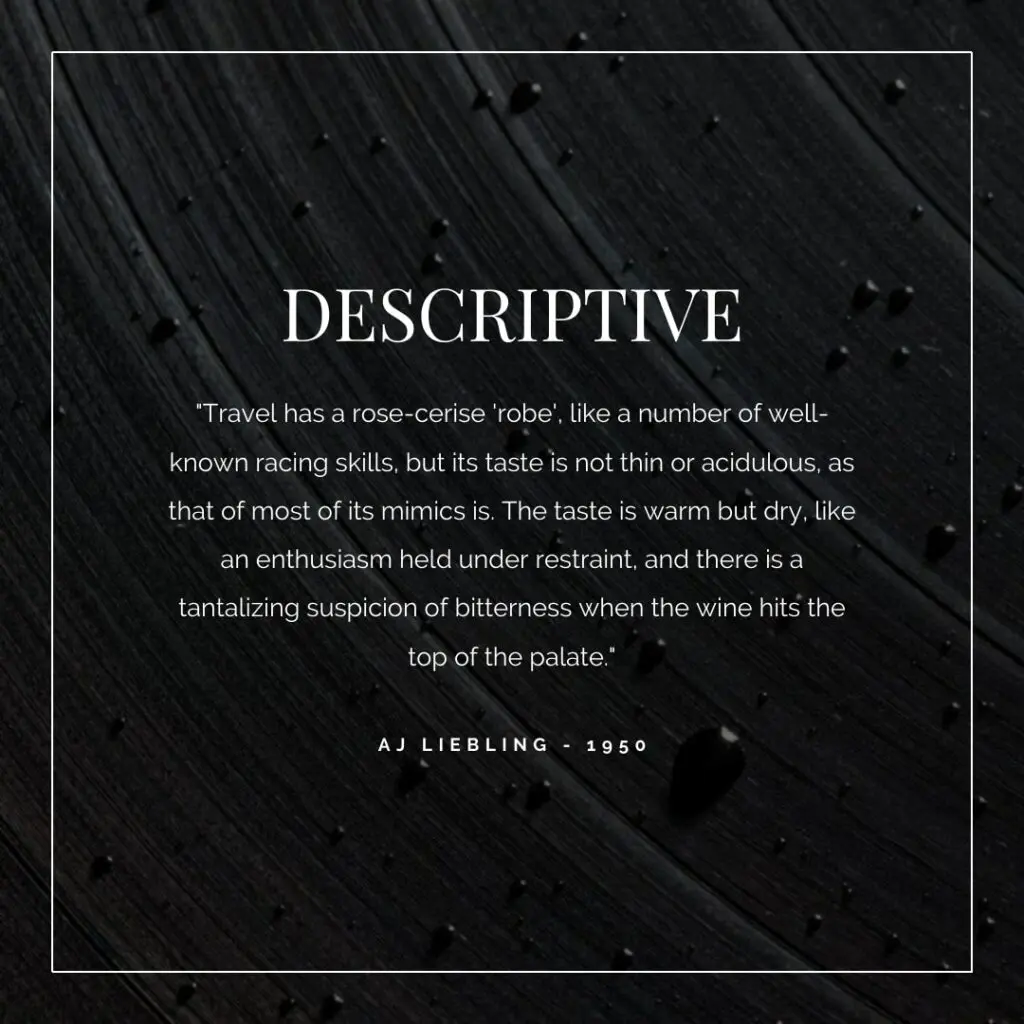
These subtle labels like “warm but dry” begin to set the stage for the Objective style that most wine writing is presented in today. Lynch’s description below reads like a Tinder bio for the 2019 Gard Rouge “Calusus.”:
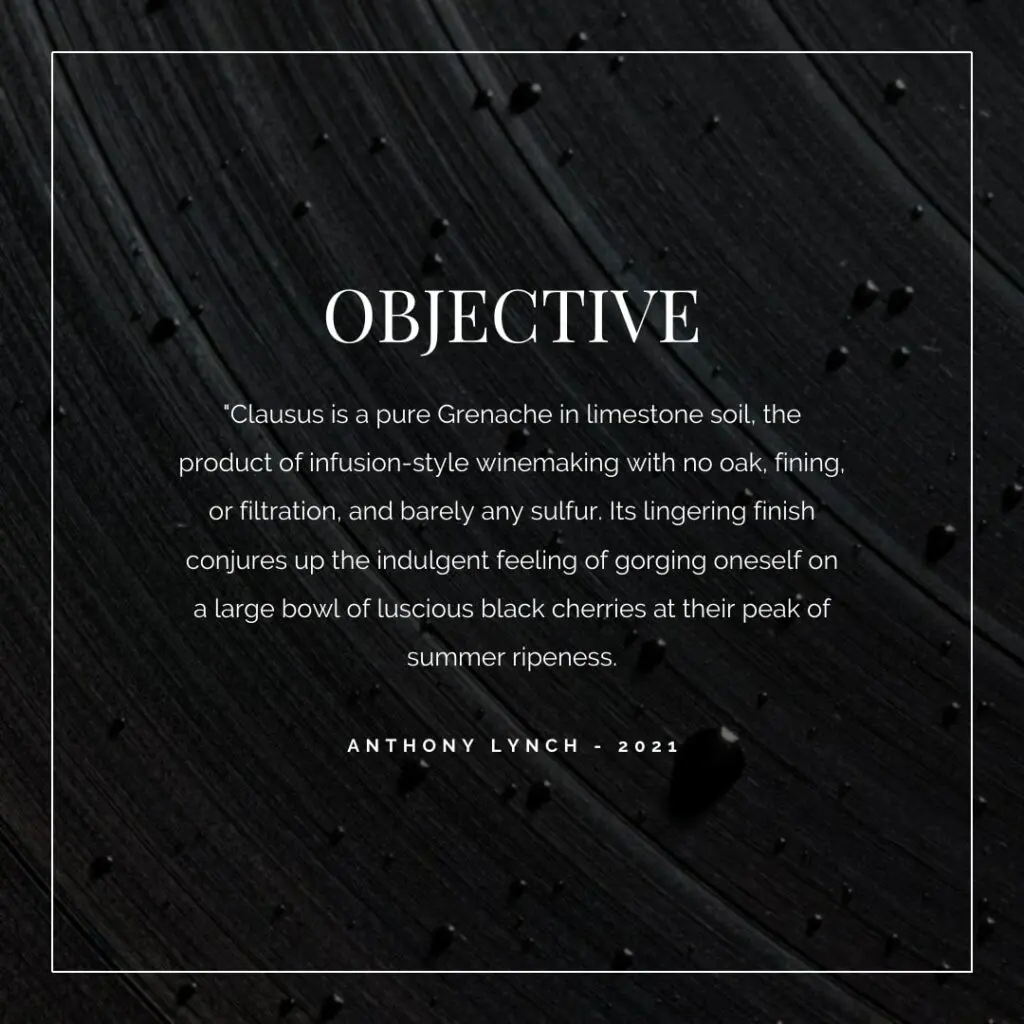
We know where it came from, its journey, and are presented with a tantalising sneak peak of the experience we can expect upon meeting a glass. No matter the era, writing is a window into the wine lifestyle itself – an experience that evokes
Love at First Sight
Much like we all have a ‘type’ when it comes to attraction, we also tend to gravitate towards specific styles of wine. Love and romance aren’t based on looks, but we can all admit that attraction based on appearance can often be the first thing that lures us in. The vibrant array of attractive wine colors are as beautifully varied as our skin tones – deep reds, dazzling whites, flirty roses…
This is absolutely the case when it comes to wine, whether it be your preference for a certain style of bottle – the sleek, Kate Moss-slim outline of a Riesling… or a more modest and classic Chianti bottle leaving so much to the imagination behind that sexy straw skirt. While the convenience and sustainability of canned, bagged, and boxed wine can be quite the intellectual stimuli, it doesn’t typically turn heads and make mouths water the way a condensation-covered bottle of Vintage Champagne does.
Even the glassware itself has an undeniable allure. Afterall, the original shape of a Champagne coupe is said to have been scandalously shaped around the left breast of Marie Antoinette (speaking of Kate Moss, London’s 34 Restaurant used the model’s left to mould their celebratory glass in 2014).
No matter the muse used to model your glass, the visual presentation of wine always comes into play. It’s no surprise why Somms go to great lengths to learn the choreography necessary to dance behind bars and around tables with their bottle partner. There’s no more impressive display of forearm muscle than the twist of an onerous corkscrew. Once your Somm has filled your glasses and placed the bottle down on your table, it feels like you’ve asked to cut in, “May I have this dance?” Now every dance for the rest of the night belongs to you.
You could say the most obvious visual characteristic of wine is the classic Red v. White. We’re presented with this question often, whether it be a dinner invite, perusing a wine list, or making a selection off a tray at an event. It’s a question as old as time, like cats or dogs? Introvert or extrovert? Morning bird or night owl? Like the majority of these questions, many people have a preference, as humans have a natural desire to crave dichotomous thinking. For some of us, our preference – much like sexuality and gender – can be more fluid. We may fluctuate from red to white and everything in between (at times all in the same evening).
We certainly can’t speak about wine in a visual sense without addressing those legs. Sexy droplets of wine that form inside the glass post-swirl. They slowly, sensuously streak down your glass, as varied as the human legs that have been stopping taxis dead in their tracks for centuries. That said, the only thing you may be able to deduce from these legs is the level of alcohol in your wine (which is about as unsexy as reading the dictionary). Like most things involving sensuality, it’s best not to overthink it. Instead, sit back and enjoy those legs like you would a work of art.
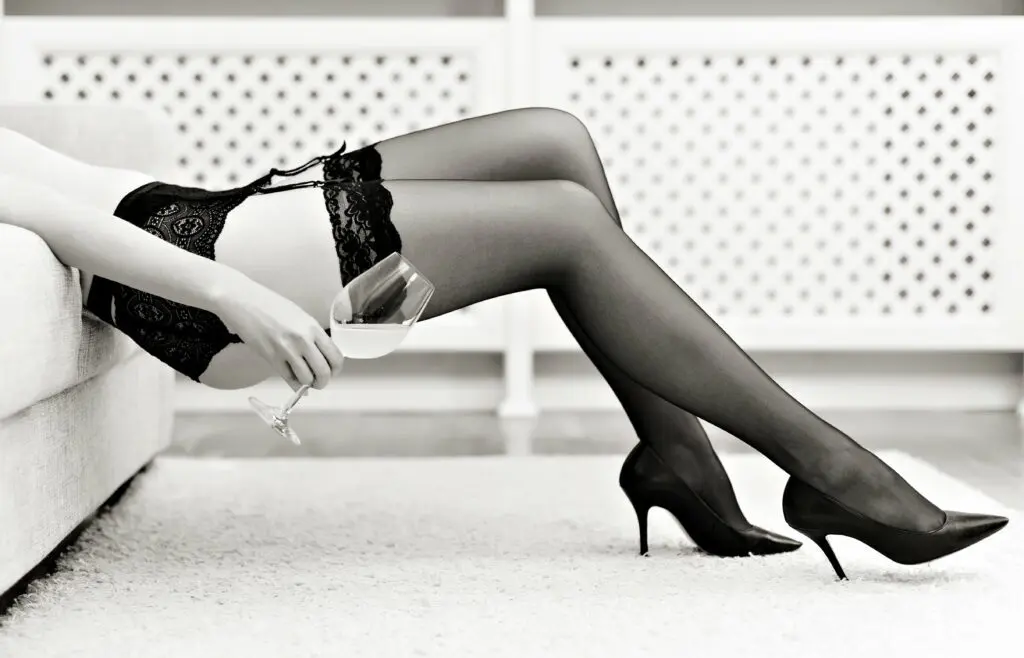
Take A Deep Inhale
Just as we’ve lured lovers in for centuries with perfumes, the aroma of wine is its most understated yet primal appeal. The sense of smell is by far the most under-utilized of the drinking experience, and for explicable reasons. Smell is the sense we hone the least during our lifetimes. When we do talk about it, it’s often in relation to something unwelcome. Like we do with sight, touch, and sound, it’s good to practice associating specific words with what we’re smelling. We tend to default to “this smells good or bad” instead of challenging ourselves to elaborate and use more descriptive vocabulary. This is extremely accessible even though we may feel a bit out of our comfort zones at first.
The best place to practice smelling is in your kitchen or your local farmers’ market. Every time you slice into a piece of fruit or unscrew a spice jar, take a moment to inhale – and say aloud exactly what you’re smelling. Your brain will start to take note of these scents, and begin to recall them more easily when you’re drinking wine. Within the world of wine, we break scents down into three categories: Primary, Secondary, and Tertiary.
Primary scents are aromas that come directly from the grape variety:
- Strawberry
- Apple
- Lemon
Secondary aromas come from the production of the wine – things like how the wine is fermented, and what type of vessel it was stored in:
- Vanilla
- Butter
- Smoke
Tertiary aromas develop as the wine matures in the bottle:
- Petrol
- Mushroom
- Honey
Aromas in wine are chemical compounds, just like the pheromones that ignite our sexual attraction and stimulate arousal, desire, lust, even fertility. Complex aromas in wine are exciting mysteries, for these ‘scents’ are not of any actual ingredients in the wine. Much like pheromones are not an actual ‘scent’ – they’re just detected through our sense of smell. The majority of aromas found in wine are chemical compounds reminiscent of that same aroma in the food or flavor we associate them with. Terpenes, for example, is found in Riesling… and also in citrus peel. Diacetyl is the chemical compound that occurs organically to create the buttery flavors in some Chardonnays. It is also manufactured in movie-theatre popcorn butter, hence our association between some Chardonnays and butter.
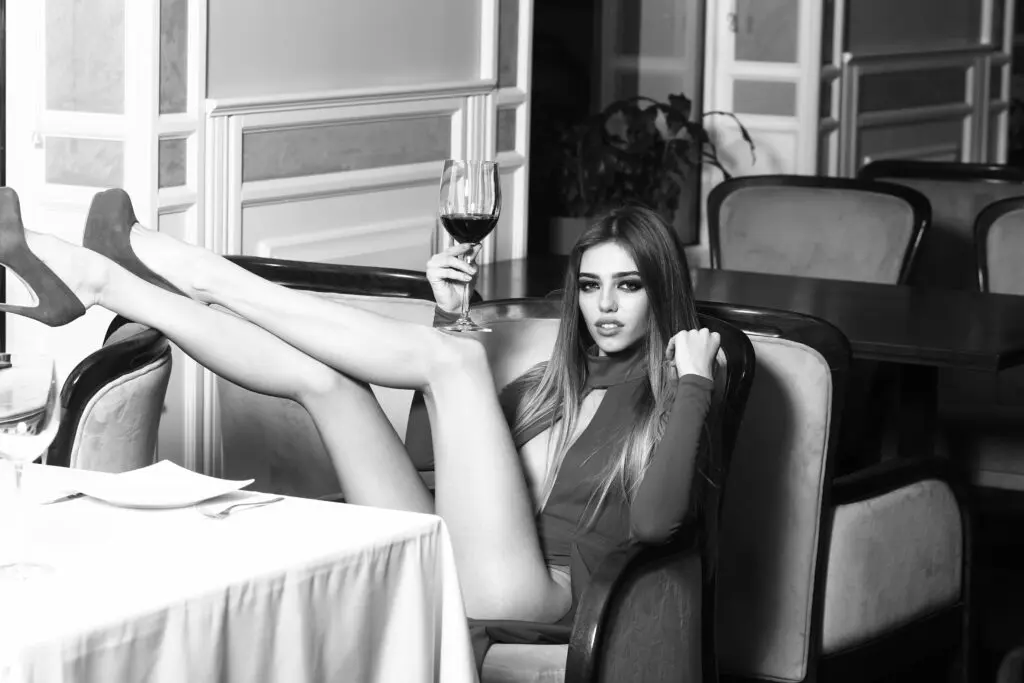
All In Good Taste
Just as the way we talk about the enjoyment and pursuit of physical pleasure has evolved, so must the way we talk about wine. As we strive to include everyone in our conversation, we must also expand our perception about what makes a ‘fine wine.’ Previously, the term was reserved for wines that were collectibles. Bottles that would be laid to rest in a cellar, evolving and appreciating in value over time. Most of us aren’t spending six figures for a bottle of Romanée Conti, and prefer to pop bottles rather than lay them down for a twenty-year nap.
That, however, certainly doesn’t mean we can’t be seduced by high-quality wines. There has been a noticeable shift in the past few years, with both industry professionals and consumers alike, all seeking more bespoke producers over marketing-heavy brands. It’s the age-old attraction of something unfamiliar, the mysterious stranger across the room whose unpredictability sends a tingle down your spine.
WSET (Wine and Spirits Education Trust), has brought clarity into the ambiguous world of wine to make it more digestible, using straightforward ‘quality assessment’ criterion for tasting. Body (the weight of the wine on your palate), Length (yes, it does matter… but here it means the finish of the wine, how long the flavour remains on your tongue), Intensity (potency of the aroma and flavors), and Characteristics (cumulative number of discernible aromas and flavors).
There’s no denying those criteria are carnal. While we’re not all looking for the exact same characteristics, knowing what you’re looking for when tasting wine is just as vital as when you’re looking for a partner in love. Just like there is no right or wrong when it comes to what and whom you’re attracted to, the same is true for wine. The most sensual sensations wine brings to the palate are through acidity and tannins. Acidity makes your cheeks pucker and your mouth water. Red wines contain tannins from contact with grape skins and stems, they are dusty and supple, clinging to your tongue like that final kiss goodnight.
It all comes down to what you find intimately attractive. You may crave fruity freshness, candy-like qualities bursting on your tongue like a juicy stick of bubblegum. If you’re in the mood for flirtation – apricot, guava, honeydew melons, zesty limes are sure to please your palate. Perhaps you feel most romantic, engulfed in floral aromas, and crave a wine that transports you to a picnic blanket nestled in a field of flowers.
Other nights, you may feel downright sultry, dressed in all black with your favorite shoe-gazing soundtrack on. That kind of thirst can only be quenched by something deep and bold… that lingers on the fine line between pleasure and pain:
Regardless of your personal palate, there are countless wines out there for you. Much like our own sensual journey, you must be willing to take a leap, move on from what doesn’t feel right, and trust your instincts until you find something that does.
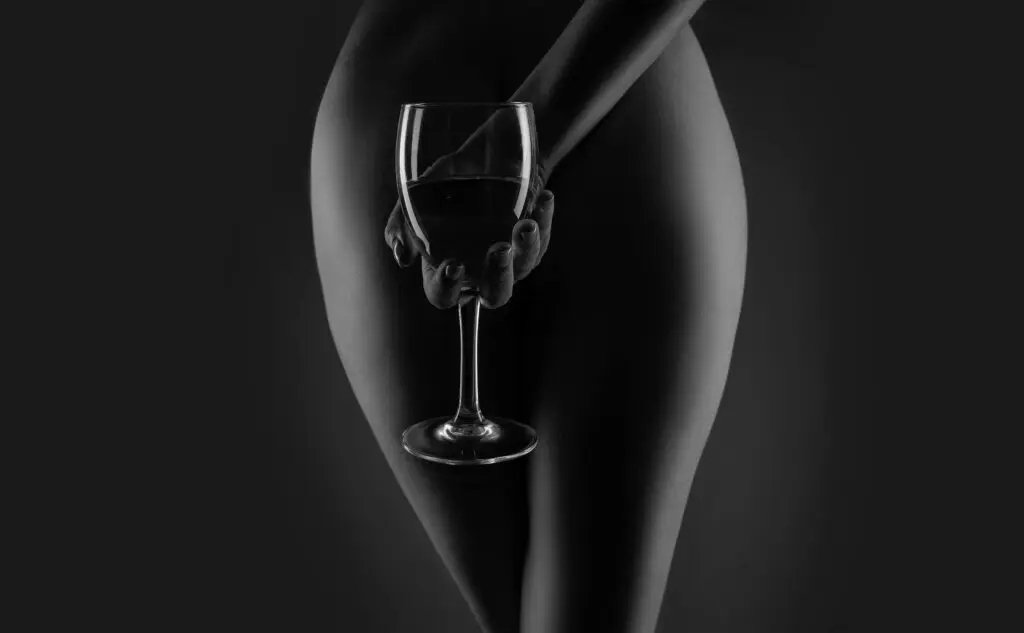
Once More With Feeling
It’s no surprise that wine bars all over the world are often rated ‘best date night spots.’ In order to really get in touch with ourselves – and others – we need an environment conducive to doing so. It’s all about location location location. Like therapists finding a cozy couch and soothing water fountains, wine bars strive to provide the type of atmosphere that really allows you to sink in. Plush velvet chaise lounges that make you feel simultaneously at ease while also exciting and dangerous as they brush up against you (the way a wooden bar stool just can’t).
The body parts that get to spend the most intimate time with wine are of course our mouth, the lips, the tongue, the feeling you get when a voluptuous red slides down the back of your throat and you can swear you feel it hitting the very core of your heart.
In sharing wine with family and friends, there’s a comfortable intimacy in knowing that you’re experiencing the same taste and texture together. It’s a bonding exercise, a shared joy, a time to truly live in the moment.
With a lover, however, the act of tasting wine is so overtly sensual that it really should come with an R rating. Scanning a wine list, and ordering two different wines so you can both try one anothers, is seriously hot ‘outercourse.’ Putting your lips on a glass rim that your partner just parted ways with is essentially saying, “Kiss me.” With the right bottle of wine, that kiss can be just as intoxicating in a dark bar or – should you, say, be in the middle of a global quarantine – a warm bubble bath of your own.
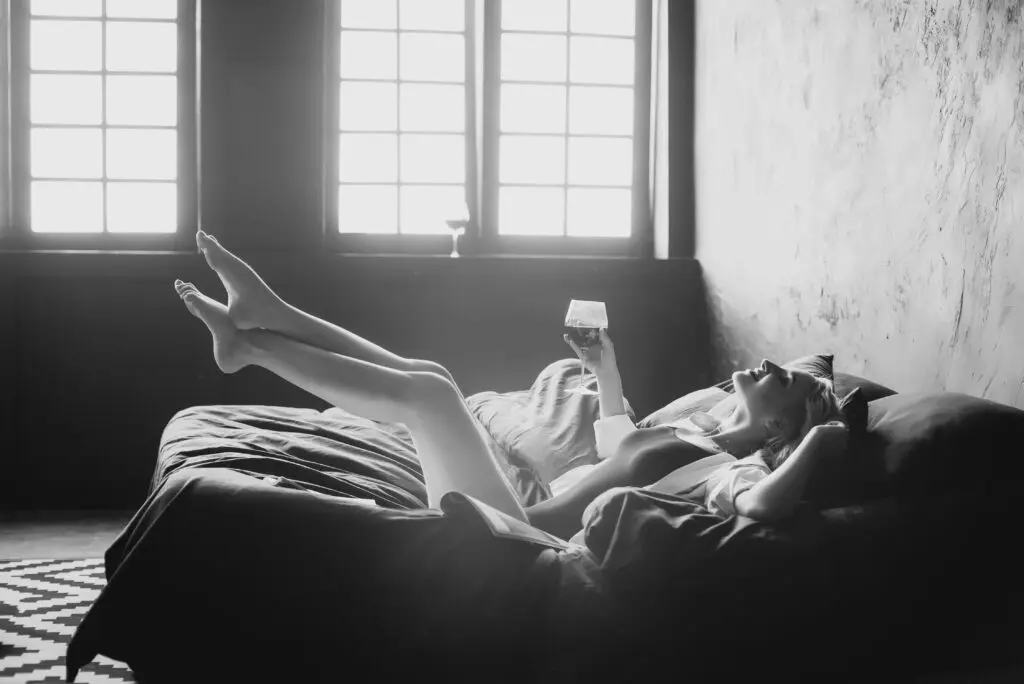
Taste The Bass
Sound and music have always run adjacent to wine. Can you imagine walking into a silent wine bar?? Or pouring out your first glass of the evening without hitting ‘play’?? Consider the instantly identifiable sounds wine itself makes – the effervescent sparkle of those champagne bubbles making your mouth water with anticipation. Even before you pour, there are few sounds more exciting than the opening of a champagne bottle. It’s no mystery why most Hollywood party scenes open with that celebratory POP. The more subtle sound of a wine bottle cork sliding up out of a freshly opened bottleneck is equally as evocative, letting you know that pleasure is imminent. It comes as no surprise that there are a plethora of ASMR recordings and videos of pouring wine. That initial glug-glug-glug followed by what sounds like a million tiny stars twinkling within your glass.
Aside from the obvious sounds we hear directly from our wines, as well as how satisfying it feels to vibe out to your favorite jam with a glass in hand, there are some incredible experts in the field that study wine and sound extensively. Dr. Jo Burzynska is a sound artist and wine writer who has done extensive research and work in the field. She was awarded her PhD for research investigating sensory and aesthetic interactions between sound and flavour/aroma. Dr. Burzynska is also credited as establishing the world’s first ‘wine and sound’ bar inside The Auricle Sonic Arts Gallery in New Zealand, where she creates bespoke wine lists to match the exhibitions and coinciding music on display, as well as holding wine and music matching workshops. Some of her research which we find most fascinating is the effects of frequency sound on the perception of mouthfeel characteristics of wine. In a study conducted with Pinot Noir and Garnacha – the wines were tasted in silence, and then alongside 100Hz (bass). In the tasting where bass was played, the Pinot Noir was perceived as much fuller bodied, the Garnacha much more aromatically intense, and both more prominently acidic. You can read her full paper on this study: Taste the Bass: Low Frequencies Increase the Perception of Body and Aromatic Intensity in Red Wine online. Regardless of whether you’re into the science or simply the bass drop, the delicious mix of wine and music is a central passion for all of us at Monarch Wine. Stay savvy here for upcoming whispers (and some enthusiastic shouts) about our future endeavors blending the two together.
From exclusive nights out to intimate pairings between you and your lover, wine is truly the most sensual compliment to the passions you crave. Make sure you keep Monarch Wine in your regular rotation for more advice on how to spice up your wine rack (and love life) in a way that promises to send all five of your senses into ecstasy you never dreamed possible.
For Kevin, being a writer has always required a great deal of wine. He never dreamed he’d be able to combine his love for the two. His screenwriting includes works for Paramount, MTV, Warner Brothers, 20th Century Fox, Bad Robot, and his role as Executive Story Editor on “Blood & Treasure,” an action adventure show on CBS and Amazon. Before that, his thirst for sketch comedy led to pieces for The Onion and National Lampoon – as well as the stages of UCB, HBO Workspace, Comedy Central Stage and festivals in San Francisco, NYC, Vancouver and beyond. He’s a write-at-home dad always ready for a winery road trip… especially a dog-friendly one.
Lucy Spain is an International Wine Professional currently based in London, with certifications from the American Sommelier Association, and a WSET Level 3 Award in Wines. Her experience acting and writing as a proud member of the Screen Actors Guild, as well as 10 years in Media Technology, make her uniquely qualified to present wine in a fresh way. She focuses on fostering diversity, equity, and inclusion in the industry, and uses her background in tech to look at the ancient art of winemaking through a modern lens. You can find her work at lucyspain.com, and say hello on Instagram
